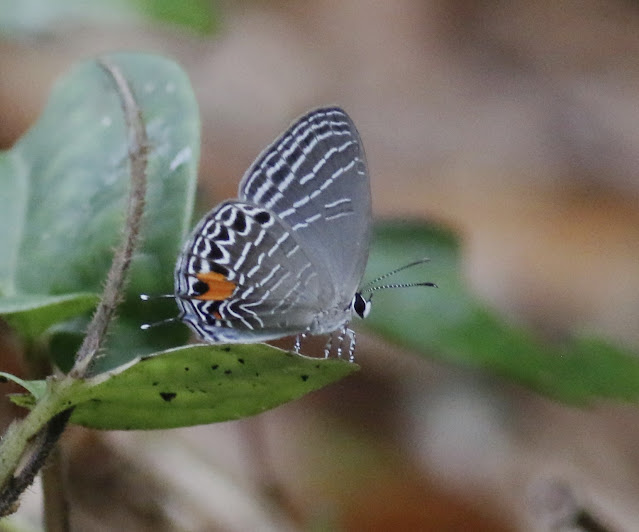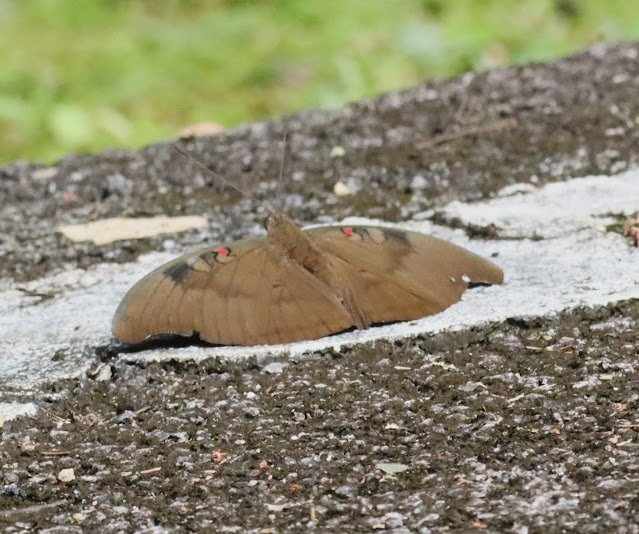Welcome back to a brand new year !! Hope things will get better this year especially in terms of spotting some rare and colourful butterflies. Weather has been unpredictable in January 2023 - mostly cloudy and windy with some rain in the evening. I managed to get some rare butterflies to start the new year and also I would like to share some field marks of a few "difficult" butterflies.
Let me start with this pristine and colourful female Blue Pansy (Junonia orithya wallacei)
It was seen on some plains with tall weeds in the Northern state of Kedah.
Yellow Glassy Tiger (Parantica aspasia aspasia)
Quite common here but apparently rare in Singapore. Here it is seen with the flowers of Siam Weed (Chromolaena odorata) which is reported to have originated from the Americas and its poisonous.
Here is another species which was seen near the Siam Weed.
Continental Swift (Parnara ganga ganga)
It can be identified from its very short antenna and larger hyaline spots.
Indigo Flash (Rapala varuna orseis)
This is the first time I am able to see its upperside colours.
I believe this is a Lesser Dart (Potanthus omaha omaha)
A Potanthus omaha couple I think.
(Ypthima huebneri) (Yphtima newboldi)
Here comes the tiny ones and the blues.
Tailless Line Blue (Prosotas dubiosa lumpura)
Barred Line Blue (Prosotas aluta nanda) and Common Hedge Blue (Acytolepis puspa lambi)
Rounded Six-Line Blue (Nacaduba berenice icena)
Okay ! now we go into the comparisons of some quite common but can be 'difficult' species.
Common Cearulean (Jamides celeno aelianus)
Banded Demon (Notocrypta paralysos varians) or perhaps a Clavate Banded Demon?
As mentioned in the CP5 field handbook, it has a white hyaline dot in space 4.
What about this one below here.
This might be a Clavate Banded Demon (Notocrypta clavata clavata) or perhaps a N. feisthamelii.
According to CP5 again, there is no spot in space 4 in the male.
How about this one?
The next one is also a super rare species.
Initially I reckoned that it could be a Poritia phama rajata based on the two dots on its FW. But after reviewing all the images further I guess it is a "Green Gem" (Poritia pleurata). Both are super rare ones.
Green Gem Poritia pleurata
Although it looks tattered but it can still be identified.
So lucky to get this defining shot.
It perched quite a distance away, so most of the shots are not as sharp as I wish.
In case you are visiting Peninsular Malaysia to view the various endemic / common butterflies, this is a general diagram / outline of the terrains where you can find them.
TILL THEN - ADIOS AMIGOS !
ENJOY THE BEAUTY OF THE BUTTERFLIES WHEREVER YOU MAYBE!









































































